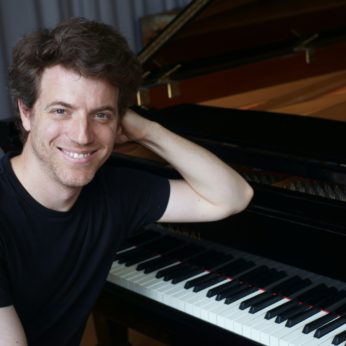Composer: Robert Schumann (b. 1810 - d. 1856)
Performance date: 05/07/2016
Venue: Bantry Library
Composition Year: 1851
Duration: 00:27:45
Recording Engineer: Richard McCullough, RTÉ lyric fm
Instrumentation: 2vn, va, vc
Instrumentation Category:Trio
Artists:
Cédric Pescia -
[piano]
Monika Leskovar -
[cello]
Nurit Stark -
[violin]

The Trio made a
tremendous impression. It is original, abounding with passion, especially the
Scherzo, which carries one along into the wildest depths. O how fortunate do I
consider myself that heaven has provided me with the sense and sensibility to
entirely grasp this spirit and this mind. So wrote Schumann’s
wife Clara in her diary after the first performance of tonight’s Trio at one of
the Schumann house music nights. Despite Clara’s enthusiastic reaction, this
Trio more or less fell out of the repertoire until quite recently. There was a
school of thought that derided Schumann’s late works as examples of his
creative decline before his incarceration in Endenich Asylum in 1854. This
careless criticism also affected the magnificent A minor and D minor Violin
Sonatas written that same autumn, a judgement that is incomprehensible when you
listen to the music.
The surging passion of the Trio’s opening Allegro is held together by the
constantly intertwining parts of the violin and cello, the music rising and
falling as if searching for some unattainable goal. This mood is briefly
lightened by the more lyrical second theme. The composer’s fascination with
this intricate counterpoint takes an unusual turn in a strange passage in the
development where the cello suddenly sets off with a mysterious pizzicato idea
that launches an extended passage where short motifs echo around the
instruments as if one of his more eccentric Carnaval characters had wandered in
from another world. Gradually however the main theme slyly re-emerges from the web
of pizzicatos and, seemingly unaffected, the music returns to its earlier path
The slow movement is indescribably beautiful, opening
with a long, deeply expressive duet for the violin and cello that reminds us fleetingly
of the first movement’s lyrical second subject. In time-honoured fashion the
central section is both darker and more dramatic until the song returns with,
at last, the piano playing a full part in the singing.
The agitated Scherzo
is short and fiery though it is hard to see why Clara picked it out ahead of
the other movements. There are two Trios, the first in the major has a
delightful syncopated melody rising step by step until its tension is released
in a little group of semi-quavers. The second trio is a brief march-like
interlude balanced by a gentle figure in triplets. Both Trios re-appear in the
Finale, whose main theme recalls the impassioned yearning of the first two
movements thus threading together for the last time the many moods of this once
under-rated work
Copyright © 2024 West Cork Music. All rights reserved.
Designed and developed by Matrix Internet